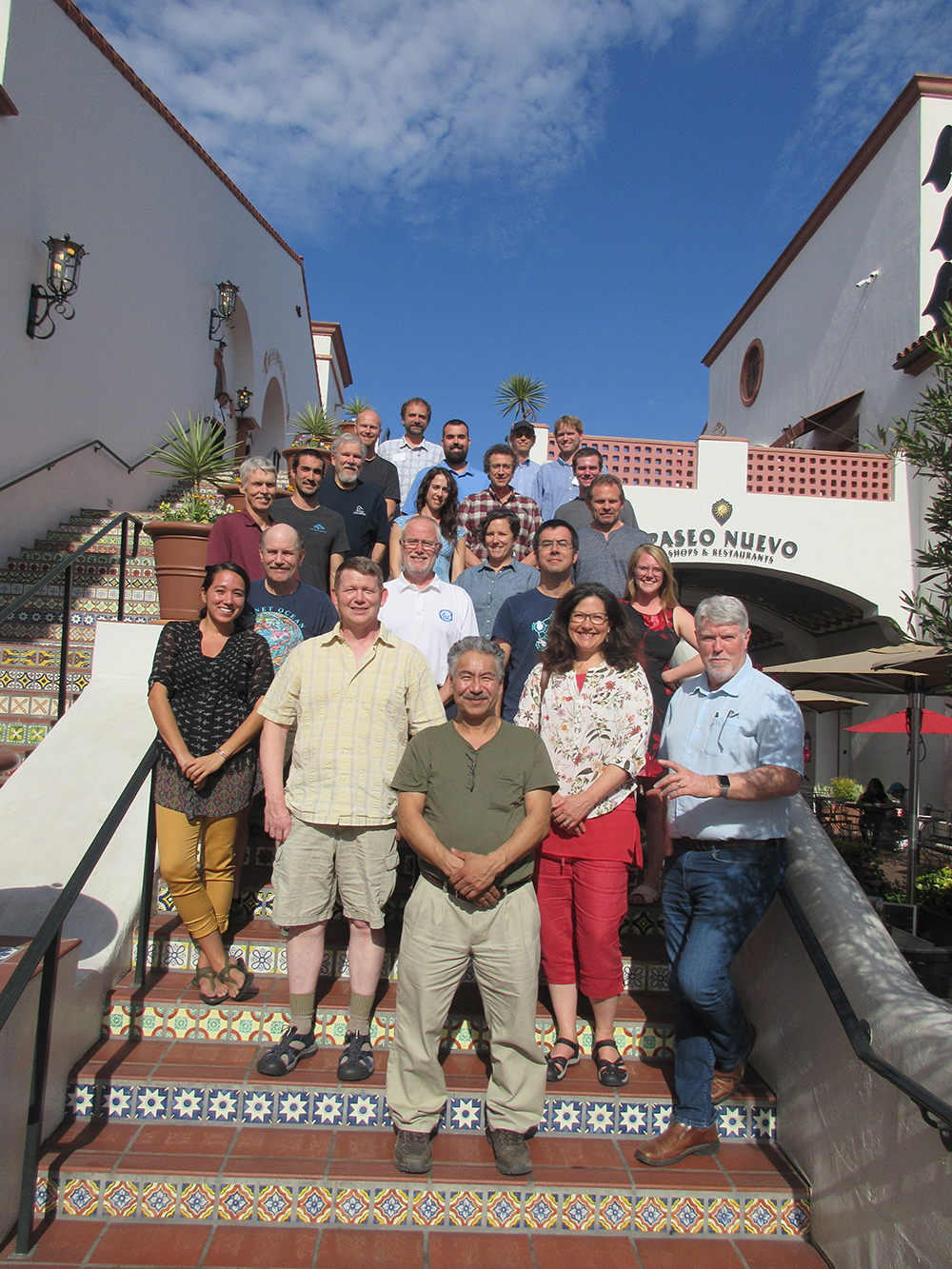NCEAS Working Groups
SASAP: Using participatory modeling to empower community engagement in salmon science
Project Description
We propose to establish a working group comprised of modelers, salmon population dynamics experts (academic and agency), and regional stakeholders from the Arctic-Yukon-Kuskokwim (AYK) region of Alaska to synthesize ideas for community-based monitoring of salmon populations and the fisheries that depend upon them. Salmon management in Alaska is informed by population and fishery assessments which provide the data needed to calibrate models used to determine escapement goals and set within-year harvesting strategies. Because of its remoteness and the absence of highly valuable commercial fisheries, the AYK region suffers from comparatively poor data, but is also home to the largest subsistence salmon fisheries in the world. Since 2008 a series of projects funded by the AYK-SSI (Sustainable Salmon Initiative) have led to development of new models of Kuskokwim and Yukon River salmon populations, the two largest rivers in the AYK region, that explicitly consider uncertainty and provide an objective basis for determining critical information needs to inform salmon management. More recently these projects have led to engagement with
regional stakeholders as we seek to build local capacity to advise Federal and State managers on regional fisheries management. We propose to build on this work by bringing the modelers, managers and stakeholders together to synthesize current knowledge and understanding of salmon science in the region and identify strategies wherein local stakeholder groups could create community-based monitoring programs that are optimally informative for salmon management and risk assessment. The modelers and their models will define critical information needs, while the stakeholders will bring practical, local knowledge of monitoring and data collection options. While the focus of the working group will be on the AYK region, the definition of critical information needs that can be met by community-based monitoring strategies has relevance to all areas of Alaska where assessment costs constrain information gathering by management agencies.

Principal Investigator(s)
Michael L. Jones
Project Dates
Start: January 1, 2017
End: March 30, 2018
completed
Participants
- Milo Adkison
- University of Alaska, Fairbanks
- LaMont Albertson
- William R Bechtol
- Kuskokwim River Inter-Tribal Fish Commission
- Matthew Catalano
- Auburn University
- Lewis G. Coggins
- US Fish and Wildlife Service (FWS)
- Brendan M. Connors
- ESSA Technologies Ltd
- Jorge Cornejo-Donoso
- University of California, Santa Barbara
- Gary Decossas
- United States Forest and Wildlife Service
- Ian Dutton
- Nautilus Impact Investing, LLC
- Janessa Esquible
- Orutsararimut Native Council
- Steve Fleischman
- Alaska Department of Fish and Game
- Charles Hahn
- University of Washington
- Toshihide Hamazaki
- Alaska Department of Fish and Game
- Carrie Holt
- Sarah Inman
- University of Washington
- Michael L. Jones
- Quantitative Fisheries Center
- Nicholas Kameroff Jr.
- Kuskokwim Inter-tribal Fisheries Commission
- Zachary Liller
- Alaska Department of Fish and Game
- Laura Loucks
- Clayoquot Biosphere Trust
- Stephanie S. Quinn-Davidson
- Tanana Chiefs Conference
- Greg Roczicka
- Orutsararimut Native Council Fisheries
- Katherine Schake
- Nautilus Impact Investing, LLC
- Daniel E. Schindler
- University of Washington
- Joseph Spaeder
- Bearing Sea Fishermen's Association
- Ben Staton
- Auburn University
- Samuel B. Truesdell
- Michigan State University
Products
-
Presentations / 2018
Linking communities to inseason salmon management: Kuskokwim River community-based salmon monitoring program
-
Presentations / 2018
Integrating rural residents into co-management and rebuilding of Kuskokwim River Chinook Salmon
